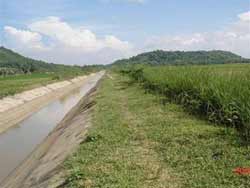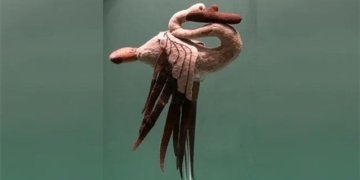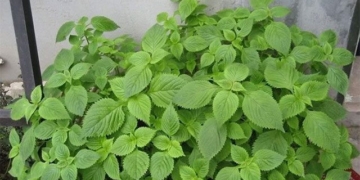Can Tho University Collaborates with International Experts to Host Seminar on “Vetiver Grass Systems for Natural Disaster Recovery and Environmental Protection in Vietnam.”
 |
Planting vetiver grass along the banks of Tinh Bien Canal, Tri Ton, An Giang |
Professor Nguyen Viet Truong, a representative of the International Vetiver Network in Vietnam, stated that in just six years from 1999 to the present, vetiver grass has been introduced in 40 provinces and nearly throughout Vietnam…
Building Riverbanks with Grass
Dr. Tran Tan Van, Deputy Director of the Institute of Mineral Research and Geological Resources under the Ministry of Natural Resources and Environment and Coordinator of the Vetiver Network in Vietnam, believes that in the Mekong Delta, expensive concrete solutions cannot be adopted to protect riverbanks or residential areas.
He cited an example where a 1 km embankment in Tan Chau Town (An Giang) cost the state 100 billion VND. However, while one embankment is built, another area faces the risk of erosion. Even in the constructed embankment, internal erosion has occurred, and concrete blocks have altered the flow, causing erosion on the opposite riverbank.
Dr. Van asserted that vetiver grass can harness the energy from the swirling floodwaters to form a natural embankment, effectively protecting infrastructure at a low cost.
The effectiveness of vetiver grass has been demonstrated by Mr. Tran Van Mi, Head of the Agriculture and Rural Development Department in Tri Ton District (An Giang), with compelling figures. He stated: “Each year, the province loses over 3,750,000 m3 of land due to erosion, with estimated damages exceeding 16 billion VND. The results of planting vetiver grass to break waves, combat flooding, subsidence, and erosion in upstream flood areas have proven effective.”
Over two flood seasons in 2004-2005, areas planted with vetiver grass in the eastern region of the Bay Xa Canal project (An Phu, Tan Chau) have not suffered erosion damage. Currently, An Giang has six districts growing a total of over 60 km of vetiver grass, with 1.7 million clumps planted.
Planting vetiver grass in residential clusters, hillside areas, and saline-affected lands has effectively prevented erosion, retained water, and reduced annual dredging costs. An Giang aims to plant approximately 5.8 million vetiver clumps for protective purposes by 2010, equivalent to 3.088 hectares.
Detoxifying with Grass
Dr. Le Viet Dung (Can Tho University) stated: “We are proposing that the government implement vetiver grass planting at key locations with severe pollution risks in the Mekong Delta. Practical experiments have shown that using this type of grass to reduce environmental pollution holds great promise.”
Dr. Dung explained that the toxic dioxin mixed in the soil will spread uncontrollably when it rains. Planting vetiver grass can create a closed barrier with roots that penetrate 1-4 meters deep, which can prevent leaching and the spread of toxins.
The root system of vetiver grass has the ability to absorb significant amounts of water from the soil and can also extract dioxin, retaining it within the roots. In Vietnam, areas heavily contaminated with dioxins, such as A Luoi (Hue), are currently receiving support from the International Vetiver Network for the program “Improving Water Quality in Vietnam” through vetiver grass planting.
Dr. Tran Tan Van further highlighted the pollution issue, stating: “Not only in the Hau River but also in some areas across the country, rivers and canals are being polluted with waste from factories, enterprises, and residential areas. If no treatment measures are taken, at least through biological methods, rivers like To Lich (Hanoi) and Ngu (Bac Ninh)… will undoubtedly face severe pollution.”
Dr. Van explained: “The root system of vetiver grass has a very high capacity to absorb both organic and inorganic substances. This grass’s ability to withstand and improve environments in polluted and harsh conditions is significantly higher than that of other plant species.
China has used vetiver grass to absorb leachate from large landfills. Australia has utilized vetiver grass to treat waste from abattoirs, dyeing factories, and pesticide processing. In Vietnam, apart from planting grass to protect dikes and canals, we are also experimenting with vetiver grass to treat wastewater at the Cafatex seafood processing factory in Can Tho.”
TRAN DUC



















































